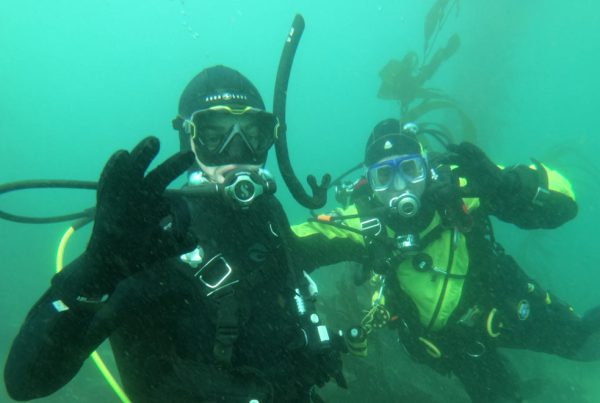Most divers face the choice—beach or boat? While we would normally prefer to dive from a boat, this option is not always possible or practical. While sandy beach dives are often easy and accessible, many divers do not think fondly of them. They often require a long swim to an interesting reef, and—that sand—it gets everywhere. There is an alternative that many rarely consider—the rocky coast entry.
Rocky coast entries and exits are often easier in moderate waves than on a sandy beach. Beach divers are pushed back and forth by wave action and must expend a fair amount of energy getting through the surf line. On rocky entries the energy of the wave is directed up and down and the wave action tends to pick you up rather than smash you against the rocks.
Divers who are experienced with sandy beach entries may find rocky coast entries a little scary the first time around, but become adept at it very quickly. It is a good idea to thoughtfully observe several possible entry points and thoroughly investigate the safety of the one you intend to use. If the water directly below the entry point is deep enough for a giant stride entry you are on easy street. Take enough time to observe and investigate the area into which you intend to jump. The last thing you want to do is to skewer yourself on a rock that is lurking just below the surface. Simply time the wave so you enter at a high point, execute your best giant stride, and ride the water away from the rocks. At many locations a few kicks will put you in water deep enough to begin your dive.
If the water is not deep enough for a giant stride entry you will have to try a modified belly flop entry. Again time the wave so you enter at a high point, crouch low and push off the rocks horizontally towards the wave. Again ride the water out and a few kicks will put you well away from the rocks.
Exits here are almost as easy as entries. Simply swim up to the ledge with your regulator in your mouth and allow a wave to carry you up onto the rocks. This is a lot easier than it sounds, and it is often best to exit on one of the larger waves of the set. Once on the rocks, either a short crawl or two steps will put you out of reach of the ocean. On particularly rough days you will want to watch the wave pattern before approaching the rocks, and pick a time where the sets are at an optimal height.
Once you get used to rocky point entries and exits, you may never go back to sandy beach diving again. There are no long swims through the surf, and no sand to clean off. Best of all, the ocean can be moderately rough and the rocky entry can still be divable, where a beach at the same time will not. Remember, you are ultimately responsible for your safety. Your diving skills need to be weighed against the conditions de jour.









